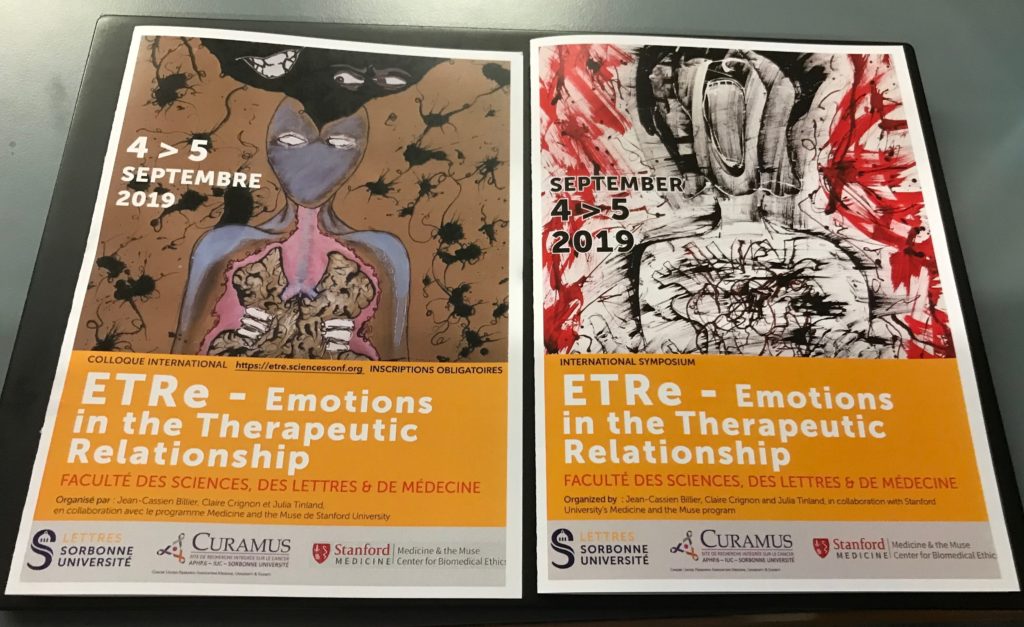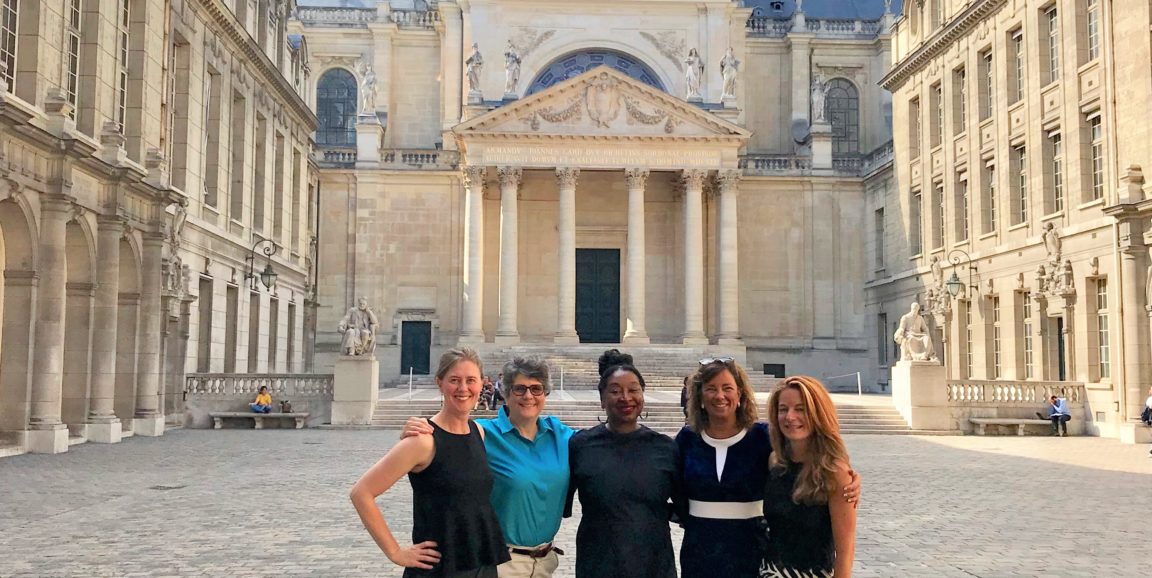Walking through the beautiful courtyard of the Sorbonne in Paris, anesthesiologist Audrey Shafer, MD, gestured to two statues on either side of a majestic dome-topped building.
"Louis Pasteur and Victor Hugo," she said, "The medical humanities, right here!"
I replied, "This is a long way from your living room."
That's where Stanford's Medicine and the Muse program began nearly two decades ago. Medical students gathered in Shafer's Palo Alto home to display art, play music and share their creative writing. From those humble beginnings, the MedMuse program has grown to a multidimensional center at Stanford for students, residents and faculty from all schools interested in the intersection of medicine, the humanities and arts, social sciences and technology.
Earlier this month, we traveled to Paris, representing MedMuse as special guests of Sorbonne Université for a conference on "Emotions in the Therapeutic Relationship."

The two-day event, a collaboration between the two universities, explored the role of empathy and emotions for patients, physicians and others involved in the clinical encounter. Stanford presenters spoke on the topics of emotions in the operating room; emotional and physical resilience; patient emotions and effective communication; and how doctors and soldiers can navigate emotions born of traumas witnessed or experienced.
Speakers from Stanford's MedMuse program included Shafer, pediatric anesthesiologist Alyssa Burgart, MD, and myself from the School of Medicine; Aleta Hayes of the Department of Theater and Performance Studies; and Laura Wittman, PhD, of Stanford's Division of Literatures, Cultures and Languages.
As two Sorbonne professors explained at the opening of the conference: when the Sorbonne initiated discussion about creating a medical humanities program about ten years ago, they looked to MedMuse -- one of the most respected programs in the country -- and contacted Shafer, its founder and faculty director.
They all stayed in touch as the Sorbonne developed the interdepartmental and institutional support needed; and the collaboration only imagined a decade ago began to take shape. A contingent from the Sorbonne attended last year's International Health Humanities Consortium Conference, the culmination of MedMuse's year-long celebration of the 200th anniversary of Frankenstein, a canonical text in the medical humanities. It was there that the Sorbonne team met with Shafer and others to plan this September exchange of experience and knowledge in France.
Thanks to the generosity of the Sorbonne, we had an amazing time. We toured the city's literary landmarks, including the Les Deux Magots café frequented by Ernest Hemingway, F. Scott Fitzgerald and other members of the Lost Generation; and we experienced the breathtaking art immersion exhibition at Atelier des Lumieres, featuring the beautiful paintings of Vincent Van Gogh.
To demonstrate a new class they'd created for their medical students, our Sorbonne colleagues took us on a special art and medicine tour at the Louvre. We seized the opportunity to get up close and personal with the Mona Lisa. (Photographs do not do her justice. Her face glows with a kind wisdom I did not expect.)
Experiencing the City of Lights with my colleagues from Stanford and the Sorbonne, I felt proud of our accomplishments and connected in some magical way to Elizabeth Blackwell, MD. She was America's first female medical school graduate, and she traveled to London and Paris in 1849 to broaden her training.
I reflected on how far MedMuse has come -- literally and geographically -- and realized a Stanford/Sorbonne collaboration represents an exciting renaissance that could take MedMuse to new and exciting places.
I'm thrilled to embark on that journey.
Jacqueline Genovese is the executive director of the Medicine and the Muse Program at Stanford.
Photo of Alyssa Burgart, Audrey Shafer, Aleta Hayes, Jacqueline Genovese, and Laura Wittman and of conference programs courtesy of Jacqueline Genovese




